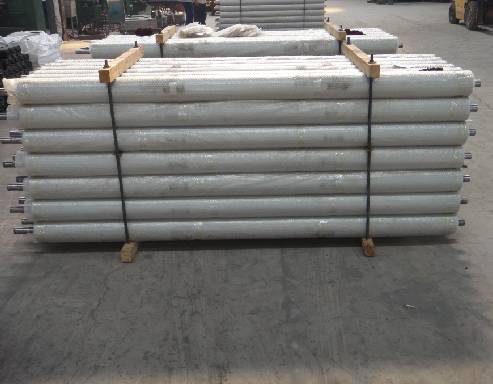 Afrikaans
Afrikaans  Albanian
Albanian  Amharic
Amharic  Arabic
Arabic  Armenian
Armenian  Azerbaijani
Azerbaijani  Basque
Basque  Belarusian
Belarusian  Bengali
Bengali  Bosnian
Bosnian  Bulgarian
Bulgarian  Catalan
Catalan  Cebuano
Cebuano  Corsican
Corsican  Croatian
Croatian  Czech
Czech  Danish
Danish  Dutch
Dutch  English
English  Esperanto
Esperanto  Estonian
Estonian  Finnish
Finnish  French
French  Frisian
Frisian  Galician
Galician  Georgian
Georgian  German
German  Greek
Greek  Gujarati
Gujarati  Haitian Creole
Haitian Creole  hausa
hausa  hawaiian
hawaiian  Hebrew
Hebrew  Hindi
Hindi  Miao
Miao  Hungarian
Hungarian  Icelandic
Icelandic  igbo
igbo  Indonesian
Indonesian  irish
irish  Italian
Italian  Japanese
Japanese  Javanese
Javanese  Kannada
Kannada  kazakh
kazakh  Khmer
Khmer  Rwandese
Rwandese  Korean
Korean  Kurdish
Kurdish  Kyrgyz
Kyrgyz  Lao
Lao  Latin
Latin  Latvian
Latvian  Lithuanian
Lithuanian  Luxembourgish
Luxembourgish  Macedonian
Macedonian  Malgashi
Malgashi  Malay
Malay  Malayalam
Malayalam  Maltese
Maltese  Maori
Maori  Marathi
Marathi  Mongolian
Mongolian  Myanmar
Myanmar  Nepali
Nepali  Norwegian
Norwegian  Norwegian
Norwegian  Occitan
Occitan  Pashto
Pashto  Persian
Persian  Polish
Polish  Portuguese
Portuguese  Punjabi
Punjabi  Romanian
Romanian  Russian
Russian  Samoan
Samoan  Scottish Gaelic
Scottish Gaelic  Serbian
Serbian  Sesotho
Sesotho  Shona
Shona  Sindhi
Sindhi  Sinhala
Sinhala  Slovak
Slovak  Slovenian
Slovenian  Somali
Somali  Spanish
Spanish  Sundanese
Sundanese  Swahili
Swahili  Swedish
Swedish  Tagalog
Tagalog  Tajik
Tajik  Tamil
Tamil  Tatar
Tatar  Telugu
Telugu  Thai
Thai  Turkish
Turkish  Turkmen
Turkmen  Ukrainian
Ukrainian  Urdu
Urdu  Uighur
Uighur  Uzbek
Uzbek  Vietnamese
Vietnamese  Welsh
Welsh  Bantu
Bantu  Yiddish
Yiddish  Yoruba
Yoruba  Zulu
Zulu Different Types of Pulley Lagging and Their Applications in Various Industries
Types of Pulley Lagging Enhancing Grip and Performance
Pulley lagging plays a critical role in the functioning and efficiency of conveyor systems in various industries. It involves the application of materials to the surfaces of pulleys to improve traction, minimize slippage, and extend the life of the pulley and belt system. Understanding the various types of pulley lagging is essential for selecting the right solution depending on operational needs, environmental conditions, and the specific application.
1. Rubber Lagging
Rubber lagging is one of the most common types of lagging used in pulley systems. It provides excellent frictional properties, which helps in enhancing grip on the conveyor belt. Rubber lagging is particularly effective in environments where moisture and wetness can lead to slippage. This type of lagging is available in various thicknesses and hardness levels, making it adaptable to various application requirements. Moreover, rubber lagging is resistant to wear and abrasion, ensuring longevity and reduced maintenance costs.
2. Ceramic Lagging
Ceramic lagging is often utilized in high-abrasion scenarios, such as mining and heavy industry. This type of lagging incorporates ceramic tiles attached to a rubber backing, providing exceptional grip and resistance to wear. Ceramic lagging is particularly beneficial in environments where the material being transported is coarse or sharp, as it can withstand the challenges posed by these conditions. The combination of rubber and ceramic enhances durability, but it may require special consideration during installation due to the rigidity of ceramic tiles.
3
. Steel Laggingpulley lagging types

For more demanding applications where ultimate durability is required, steel lagging is an option that should be considered. Steel lagging is typically used in environments with high temperatures or chemical exposure, as steel provides robust resistance under these conditions. This type of lagging can also handle heavy loads without suffering from deformation. However, it's important to note that steel lagging can be more expensive than other types and may not provide as much grip as rubber or ceramic options, necessitating careful evaluation based on the specific application requirements.
4. Polyurethane Lagging
Polyurethane lagging offers a middle ground between rubber and more rigid solutions like steel or ceramic. It provides good wear resistance, flexibility, and high friction coefficients. Polyurethane is particularly suited for applications where both durability and grip are essential, but where metal wouldn’t be appropriate, such as in food processing environments. This type of lagging is also advantageous in terms of its lightweight nature and ability to absorb shock, contributing to the overall efficiency of the conveyor system.
5. Groove and Ribbed Lagging
Another option is groove or ribbed lagging, which has patterns that enhance grip and traction. This specific design can improve the pulley’s performance by increasing the surface area contact with the conveyor belt, thereby reducing slippage. Groove lagging is beneficial in applications with significant incline and decline angles, where enhanced traction is needed to move materials effectively.
Conclusion
Selecting the appropriate type of pulley lagging is essential to ensuring the optimal performance of conveyor systems. The decision should be based on various factors, including the operational environment, the materials being transported, and the specific requirements of the application. Whether opting for rubber, ceramic, steel, polyurethane, or specialized designs like groove lagging, understanding the characteristics and benefits of each type of lagging will lead to improved efficiency, reduced downtime, and enhanced longevity of the entire conveyor system. Investing in the right pulley lagging is not just a maintenance issue but a critical strategic decision for industrial operations.
-
Revolutionizing Conveyor Reliability with Advanced Rubber Lagging PulleysNewsJul.22,2025
-
Powering Precision and Durability with Expert Manufacturers of Conveyor ComponentsNewsJul.22,2025
-
Optimizing Conveyor Systems with Advanced Conveyor AccessoriesNewsJul.22,2025
-
Maximize Conveyor Efficiency with Quality Conveyor Idler PulleysNewsJul.22,2025
-
Future-Proof Your Conveyor System with High-Performance Polyurethane RollerNewsJul.22,2025
-
Driving Efficiency Forward with Quality Idlers and RollersNewsJul.22,2025





























